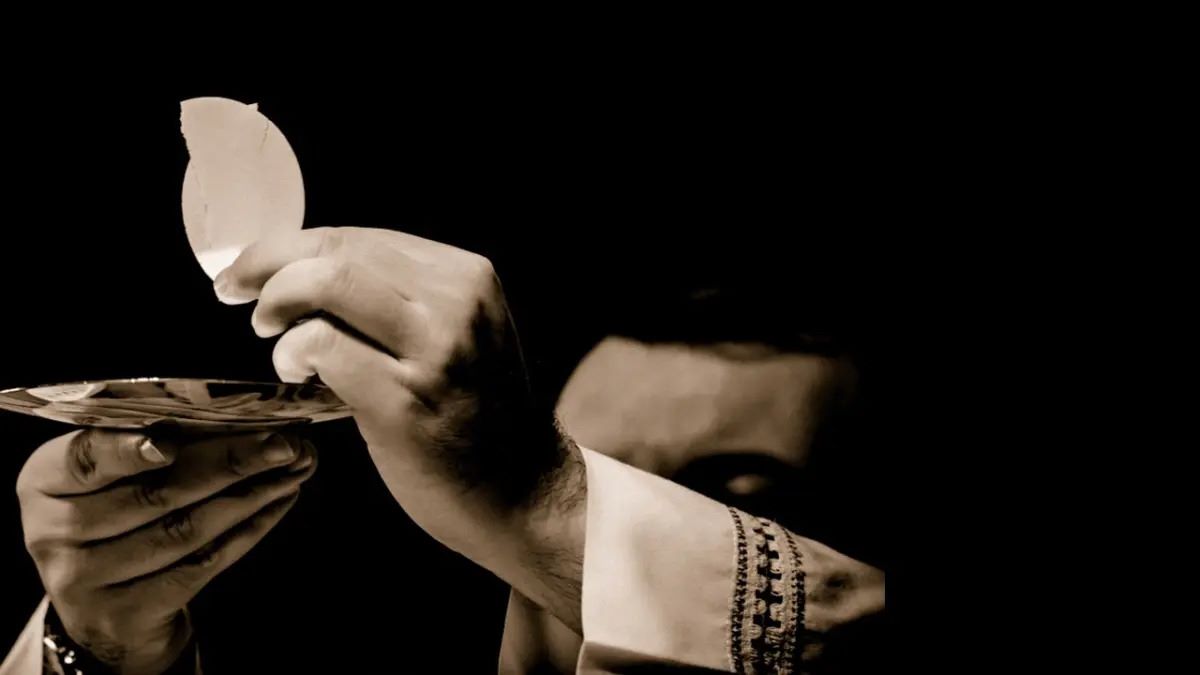
What is Real Presence? Real Presence refers to the belief that Jesus Christ is truly present in the Eucharist, not just symbolically but in a real and substantial way. This concept is central to many Christian denominations, especially within Catholicism, where it is a cornerstone of faith. Why does it matter? For believers, the Real Presence means that during Communion, they are not merely remembering Christ's sacrifice but actually encountering Him. This belief shapes worship practices, church teachings, and personal faith journeys. How is it understood? Different denominations interpret Real Presence in various ways, from literal to symbolic. Understanding these perspectives can deepen one's appreciation of this profound mystery. Ready to learn more? Let's dive into 20 fascinating facts about Real Presence that will enrich your understanding and perhaps even your faith.
Real Presence in the Eucharist
The concept of Real Presence in the Eucharist is central to many Christian denominations, especially within Catholicism. This belief holds that Jesus Christ is truly present in the bread and wine consecrated during the Mass. Let's explore some fascinating facts about this profound doctrine.
-
Transubstantiation is the term used to describe the change of the bread and wine into the body and blood of Christ. This change occurs during the consecration in the Mass.
-
The doctrine of Real Presence was formally defined at the Council of Trent in the 16th century. This council aimed to clarify Catholic teachings in response to the Protestant Reformation.
-
Eucharistic Adoration is a practice where the consecrated host is displayed in a monstrance for worship. Believers spend time in prayer and reflection before the Real Presence.
Historical Beliefs and Practices
Understanding the historical context of Real Presence can provide deeper insight into its significance. Various traditions and practices have evolved over centuries.
-
Early Christians believed in the Real Presence, as evidenced by writings from Church Fathers like St. Ignatius of Antioch and St. Justin Martyr.
-
The Fourth Lateran Council in 1215 was another significant moment, reaffirming the belief in transubstantiation and the Real Presence.
-
Medieval theologians like St. Thomas Aquinas developed detailed explanations of how the Real Presence occurs, blending philosophy and theology.
Symbolism and Theology
The Real Presence is rich in symbolism and theological meaning. These aspects help believers connect more deeply with their faith.
-
The bread and wine symbolize the body and blood of Christ, but through consecration, they become more than symbols—they become the actual presence of Jesus.
-
Sacramental Union is a term used by some Protestant denominations to describe a belief similar to Real Presence, though they may not use the term transubstantiation.
-
The Eucharist is often called the "source and summit" of Christian life, emphasizing its central role in worship and daily living.
Modern Perspectives and Practices
In contemporary times, the belief in Real Presence continues to be a vital part of Christian worship, with various practices and perspectives.
-
Pope John Paul II emphasized the importance of the Eucharist in his encyclical "Ecclesia de Eucharistia," calling it a mystery to be lived.
-
Many parishes hold Eucharistic processions, where the consecrated host is carried through the streets, allowing the community to publicly honor the Real Presence.
-
Eucharistic miracles are reported instances where the consecrated host has visibly transformed into flesh and blood, reinforcing belief in the Real Presence.
Ecumenical Dialogues
The doctrine of Real Presence has been a topic of discussion among various Christian denominations, leading to both agreements and disagreements.
-
The Anglican Church holds a belief in the Real Presence, though interpretations may vary among different branches and theologians.
-
Lutherans believe in the Real Presence through the concept of "sacramental union," where Christ's body and blood are present "in, with, and under" the bread and wine.
-
Ecumenical dialogues between Catholics and other Christian denominations often address the Real Presence, seeking common ground and mutual understanding.
Personal and Communal Impact
The belief in Real Presence has profound effects on both individual spirituality and community life.
-
Receiving the Eucharist is seen as a moment of intimate communion with Christ, nourishing the soul and strengthening faith.
-
Communal worship during the Mass unites believers in a shared experience of the Real Presence, fostering a sense of belonging and spiritual solidarity.
-
Eucharistic devotions like the Forty Hours' Devotion involve extended periods of prayer before the Real Presence, deepening personal and communal faith.
Challenges and Controversies
Despite its importance, the doctrine of Real Presence has faced challenges and controversies throughout history.
-
The Protestant Reformation led to significant debates about the nature of the Eucharist, with reformers like Martin Luther and John Calvin offering differing views.
-
Modern skepticism and secularism pose challenges to belief in the Real Presence, prompting the Church to find new ways to explain and celebrate this mystery.
The Final Word
Real Presence is a concept that has fascinated people for centuries. It’s not just a religious term but a profound idea that touches on faith, belief, and the mysteries of existence. Whether you’re deeply religious or just curious, understanding Real Presence can offer a new perspective on life and spirituality.
From historical roots to modern interpretations, this concept has evolved but remains a cornerstone for many. It’s a reminder that some things can’t be fully explained, only experienced.
So, next time you hear about Real Presence, remember it’s more than just a phrase. It’s a journey into the heart of what it means to truly believe. Keep exploring, keep questioning, and you might find your own answers along the way.
Was this page helpful?
Our commitment to delivering trustworthy and engaging content is at the heart of what we do. Each fact on our site is contributed by real users like you, bringing a wealth of diverse insights and information. To ensure the highest standards of accuracy and reliability, our dedicated editors meticulously review each submission. This process guarantees that the facts we share are not only fascinating but also credible. Trust in our commitment to quality and authenticity as you explore and learn with us.


